This is an easy rose sangria recipe with strawberries, a fantastic wine drink that takes 10 minutes to prepare and lasts several hours, making it ideal for hot-weather gatherings. It's perfect for Spring gatherings, Mother's Day, Easter and informal parties. A crisp and light twist on the classic sangria we all know and love.
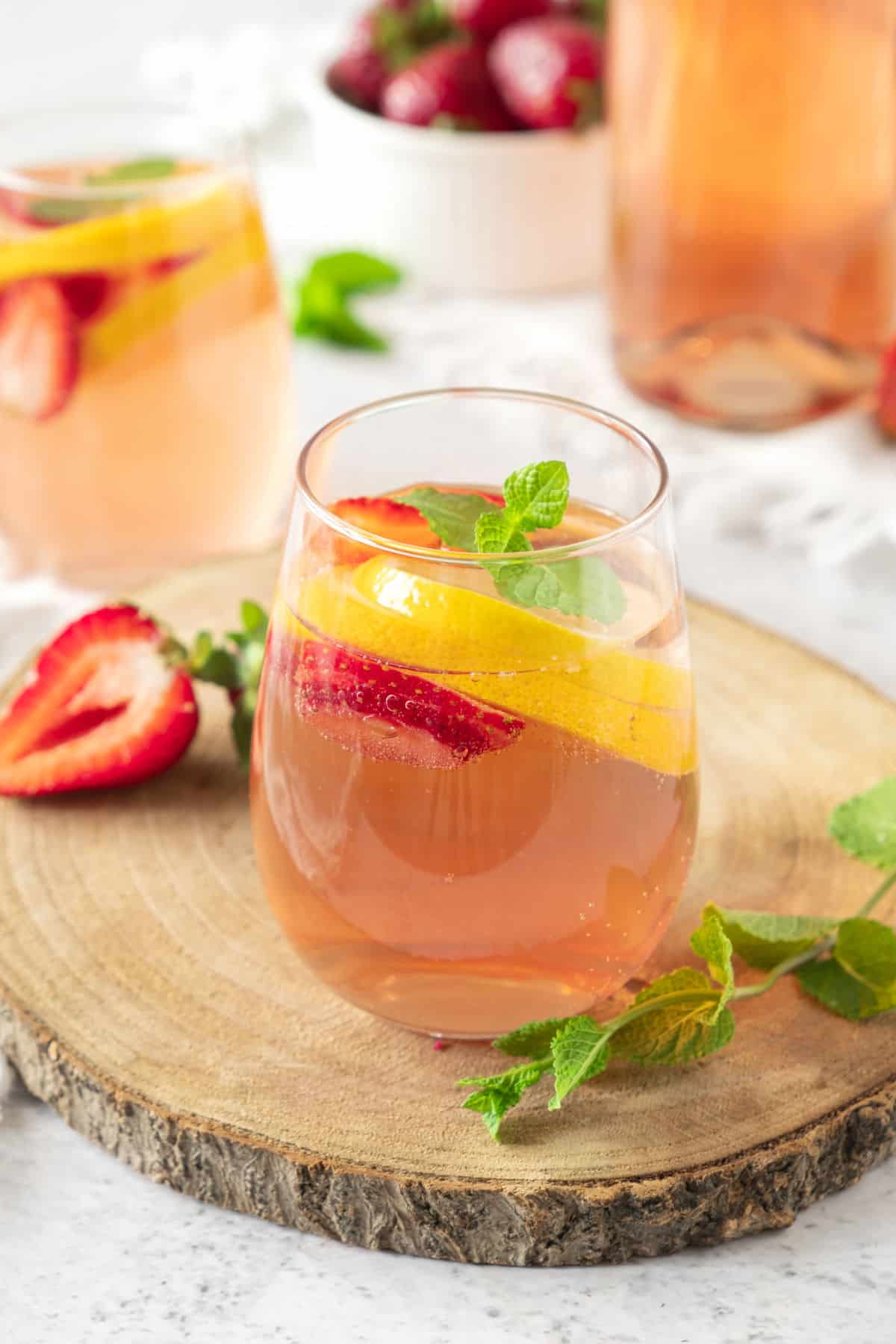
Spring drink
We are sangria lovers, and this sangria recipe with rose wine and strawberries is our latest addition to an ever-growing drinks category (with and without alcohol).
Just in case you didn't notice the white sangria (made with white wine, of course) and the red sangria. All with unique fruit and flavor profiles.
For holiday parties, you might want to try our cranberry sangria or the popular apple cider sangria.
There's a sangria for every occasion.
- Refreshing and easy to prepare.
- Versatile and customizable with different fruits.
- Crowd-pleasing and ideal for socializing.
- Impressive presentation.
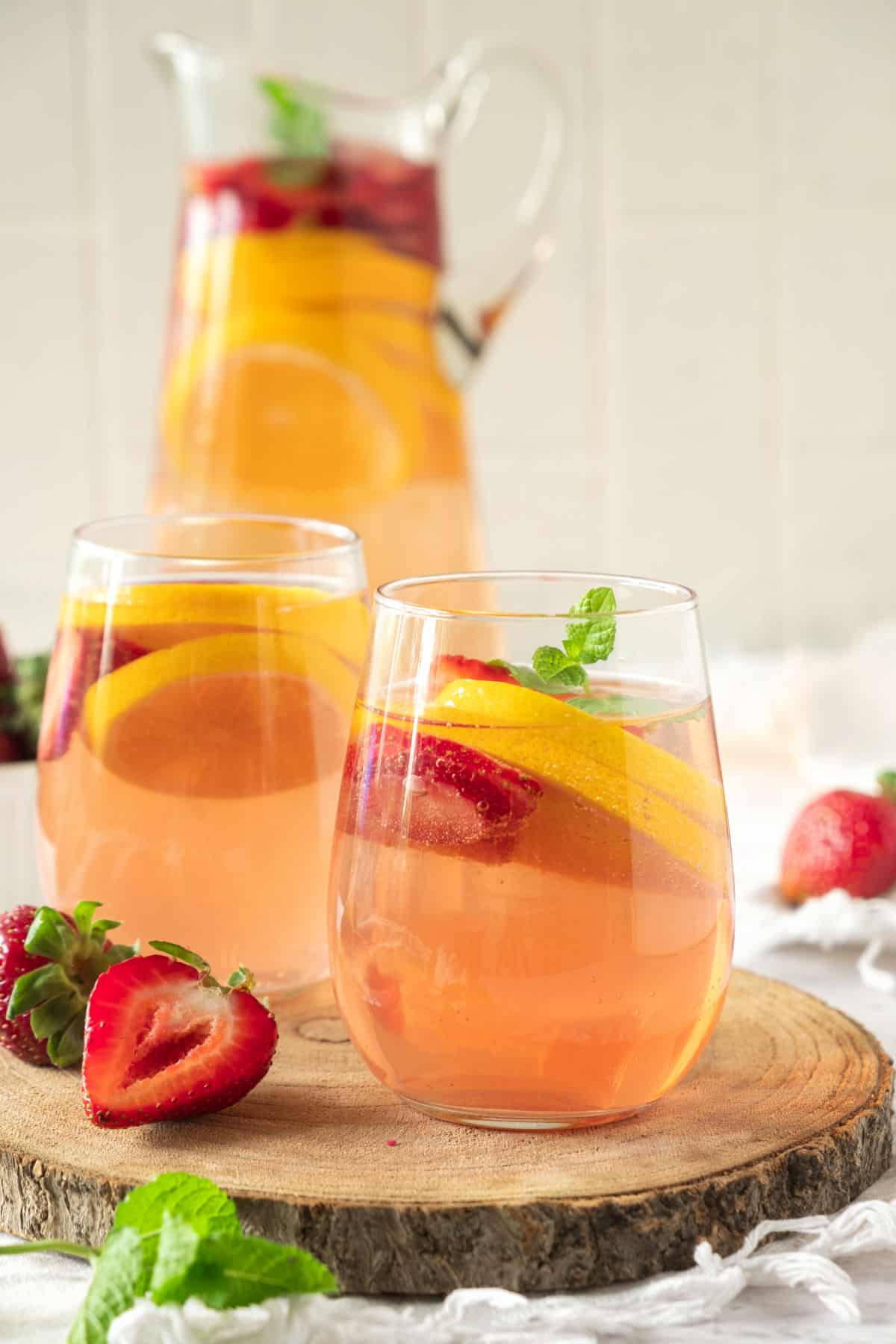
FAQ
They differ in the type of wine used. Rose sangría uses a rosé wine (usually dry), and classic sangría uses red wine (cabernet, malbec, merlot, etc.). Also, the fruits used might differ due to the sweeter nature of rosé wine.
Rosé is fruity and sweeter than red wine, with a lighter color and flavor. Both are produced from the same red grapes, but the former is fermented for a reduced time. It takes time for red wine to develop its deep flavor and color, making it more robust than its rose counterpart.
Yes, and it's encouraged, especially if you like a fruitier drink. The chunks of fruit will release their juice and sweeten the sangria as the hours go by. This Spanish beverage will taste slightly different as time passes.
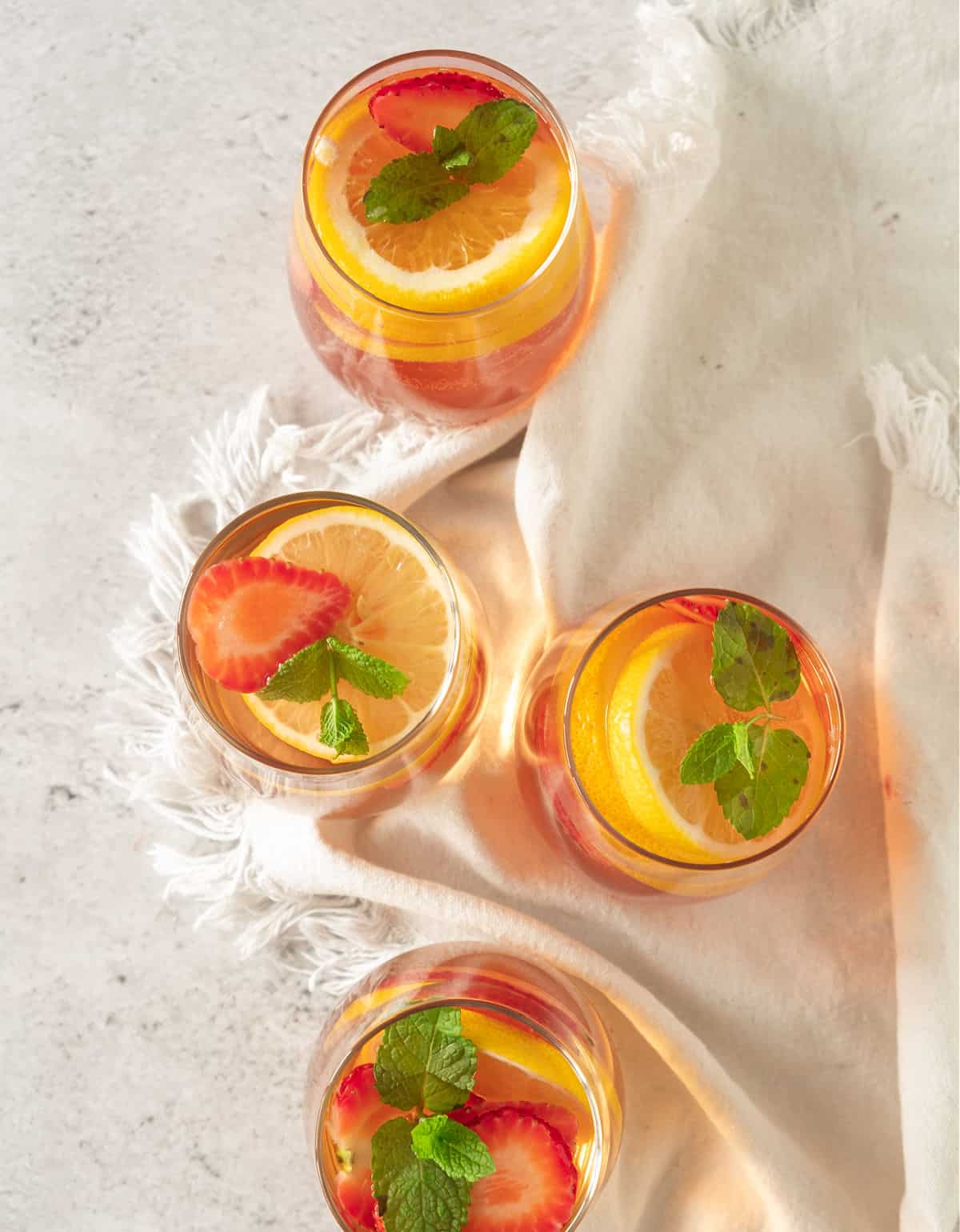
Ingredient Notes
Quantities are listed in the recipe card toward the end of this post. The Ingredients page has more details and lists the brands I use.
- Rosé wine: use your favorite. It can be dry or sweetened (late harvest). Depending on your choice, increase or decrease the amount of syrup or sugar.
- Fruit: orange, peach, strawberries (or raspberries), and lemon, with rind and skin.
- Orange liqueur: triple sec, Cointreau and Grand Marnier are all good.
- Club soda or sparkling water: if you want to add some fizz. It can be omitted if you don't have any. Don't refrain from making this sangria because it's not available.
- Mint leaves: optional for serving.
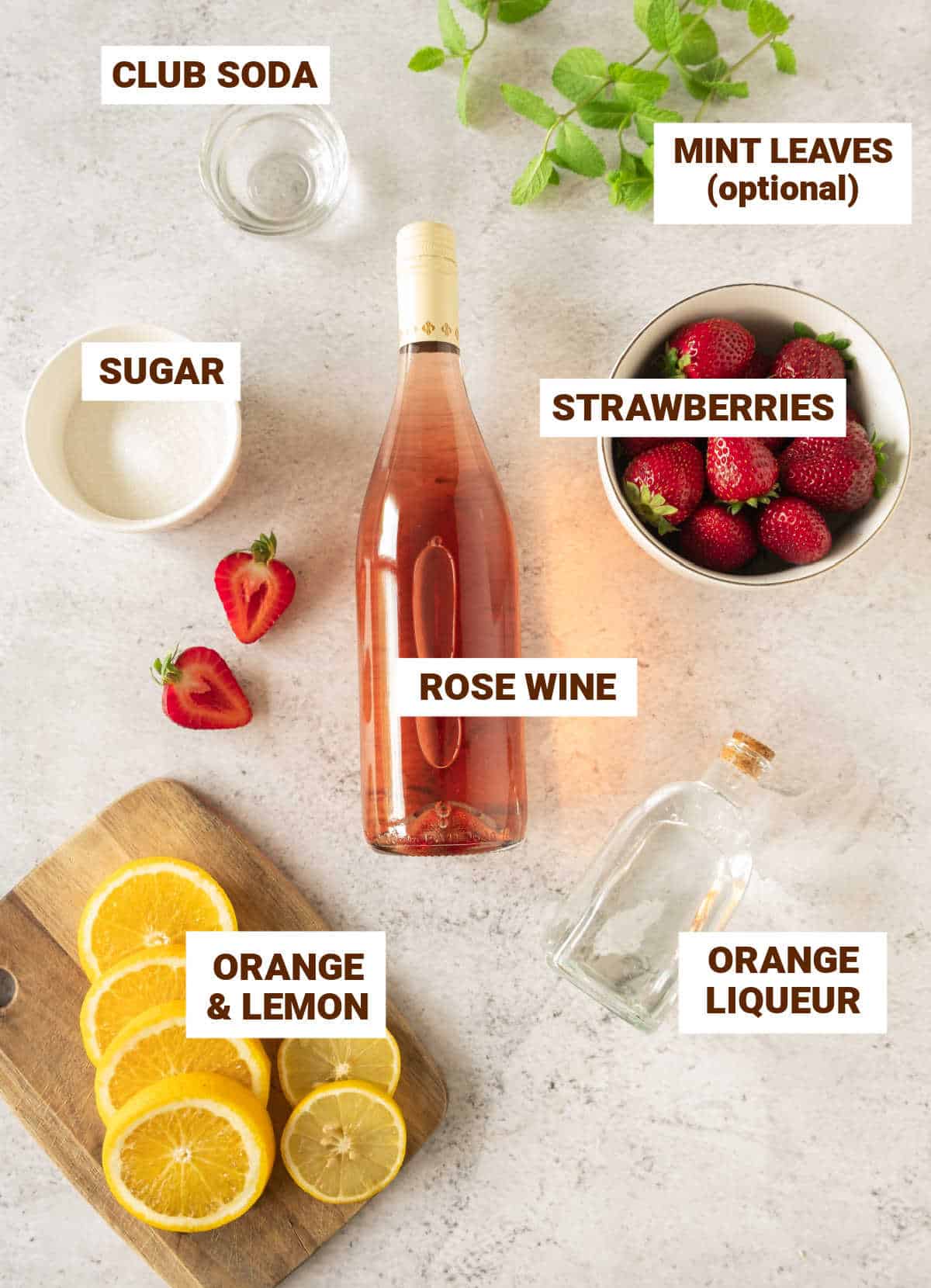
Variations & substitutions
- Just berries: use only strawberries or raspberries or a mix.
- Prosecco: add this popular Italian sparkling wine instead of the club soda and orange liqueur.
- Just peaches: use yellow and white peaches and no berries for a mellower sangria.
- Sweetener: use honey or fruit syrup (like fig or grape) instead of sugar for a unique flavor. Or use brown sugar for a more caramel tone.
Steps to make rose wine sangria
Use a dry wine If adding a sweetener (sugar, syrup, honey) or a late harvest sweeter rosé wine and omit all or part of the sugar. Sangría is fruity and sweet, but the wine must have a strong presence.
Sweetener: a simple syrup or sugar. I favor the first option as it blends faster with the wine and doesn't pool at the bottom of the pitcher.
Fruit: you need unpeeled fresh lemon, oranges, strawberries and peaches.
Can you use frozen fruit? Fresh fruit is always preferred, but you can certainly make sangría with frozen ones. Some are better than others, like berries, as opposed to apples and peaches that lose texture and volume when frozen.
Can you replace the sparkling water? Yes, use a lemon-lime soft drink (7up and Mountain Dew are often used). Or omit it; the sangria will be excellent anyway.
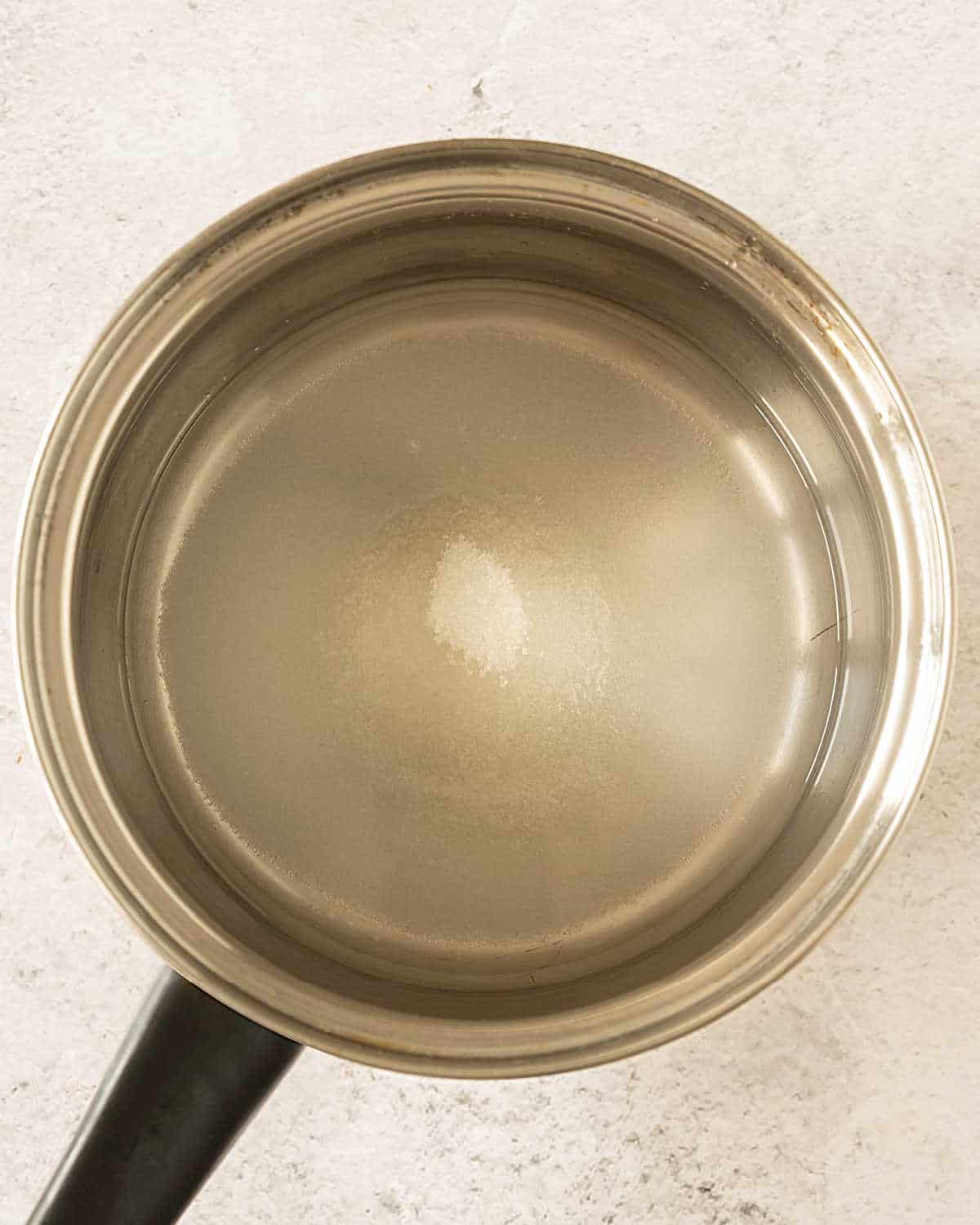
- Make the simple syrup: Put sugar and water in a small saucepan and cook until it breaks to a boil. Remove from the heat and use cold or at room temperature.
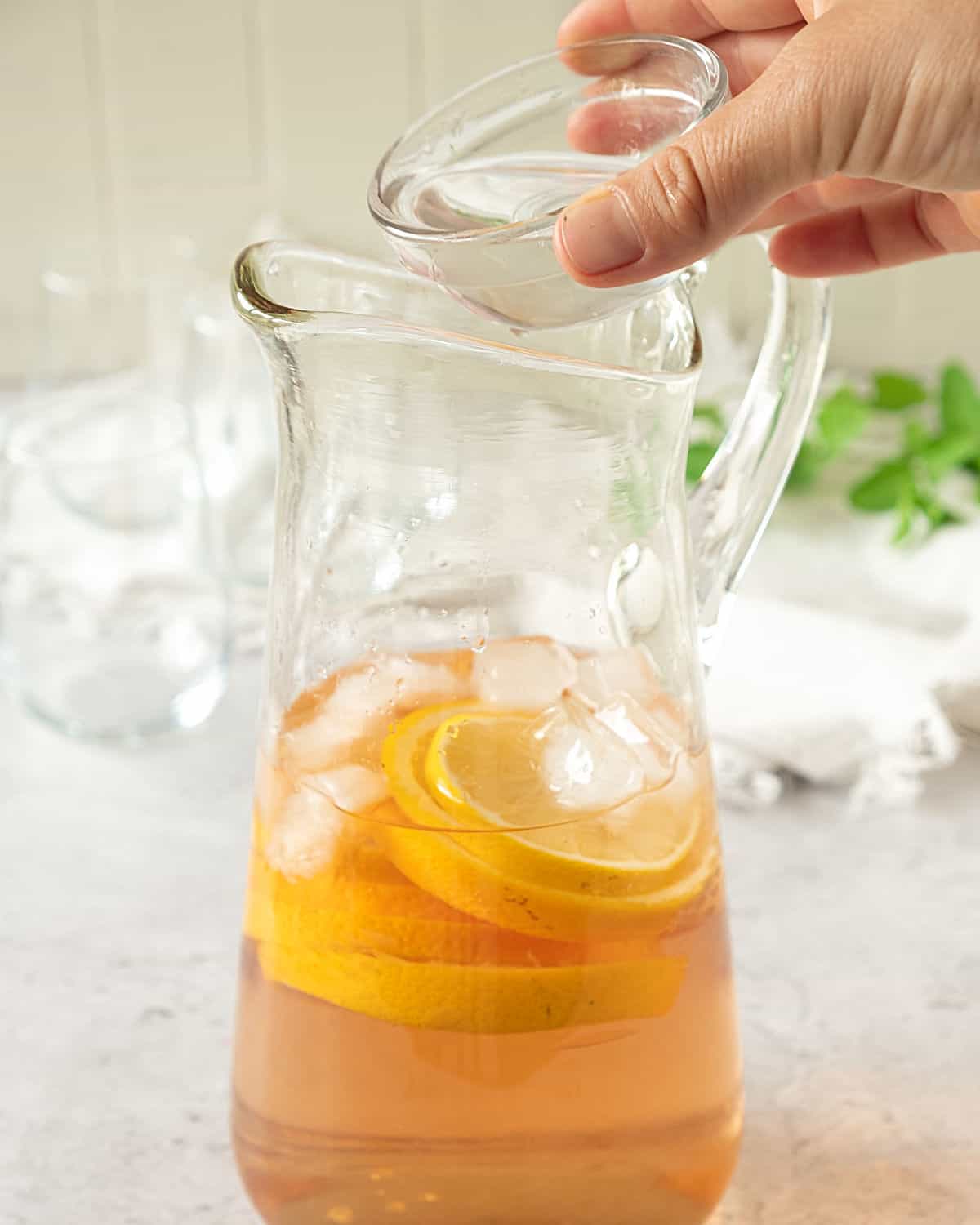
- Slice the fruit and add it to the pitcher with the wine and some ice. You should have some space left.
Vintage Kitchen Tip
Don't add too much fruit from the start, as you might run out of pitcher space for the wine after you add ice.
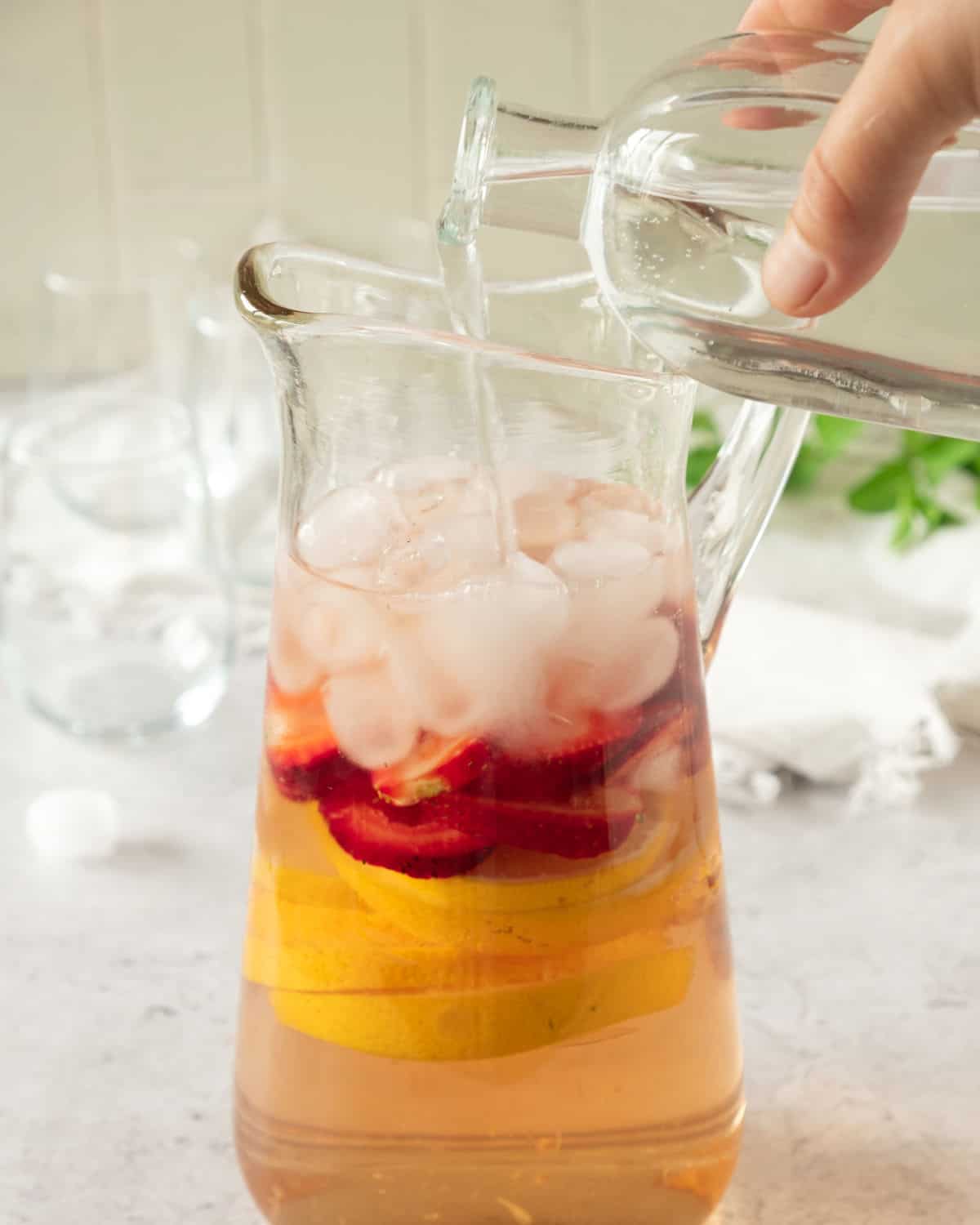
- Fill the pitcher with the remaining ingredients, and use the leftover fruit to serve.
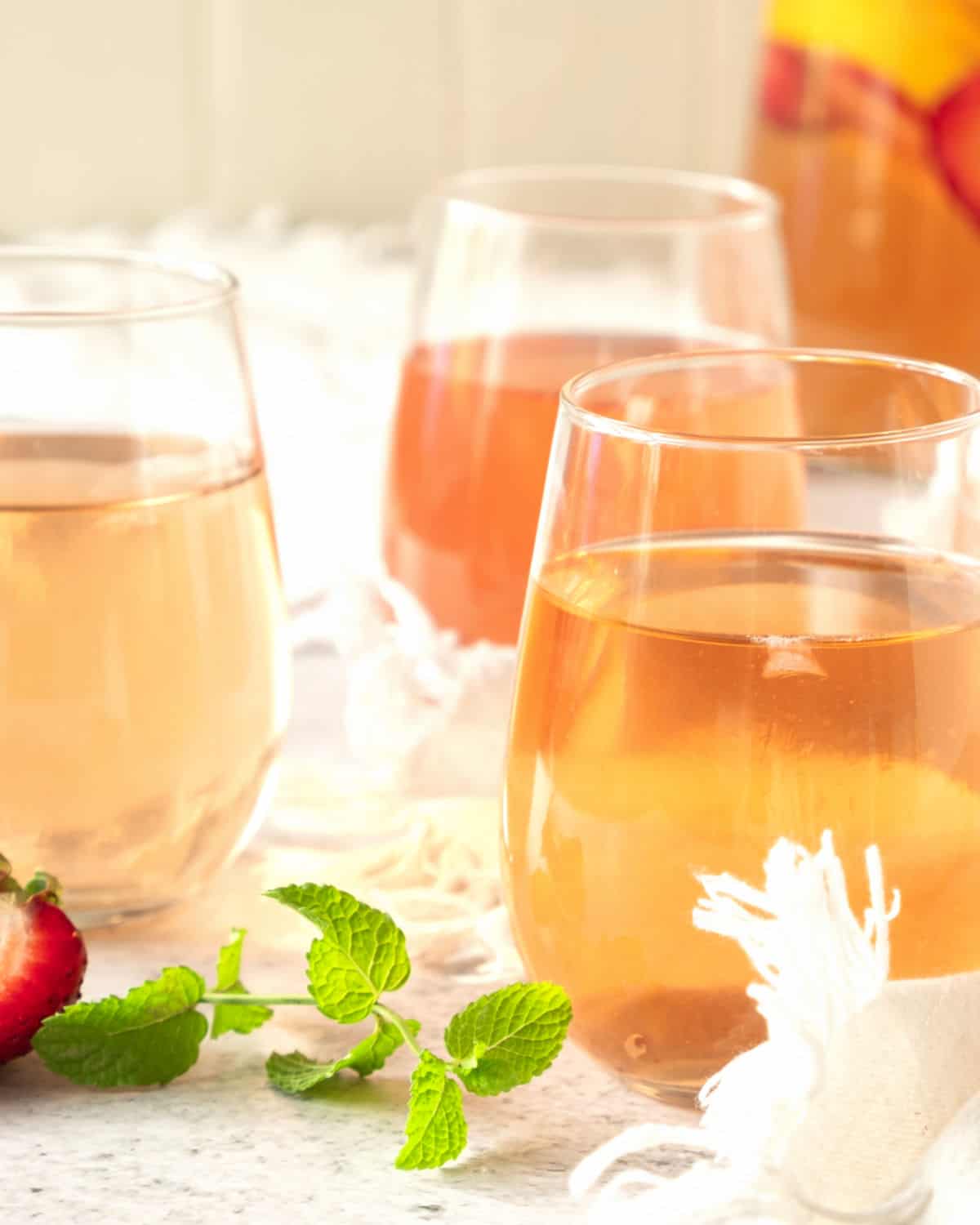
- Or serve it without fruit. It's less common, but many people like it this way.
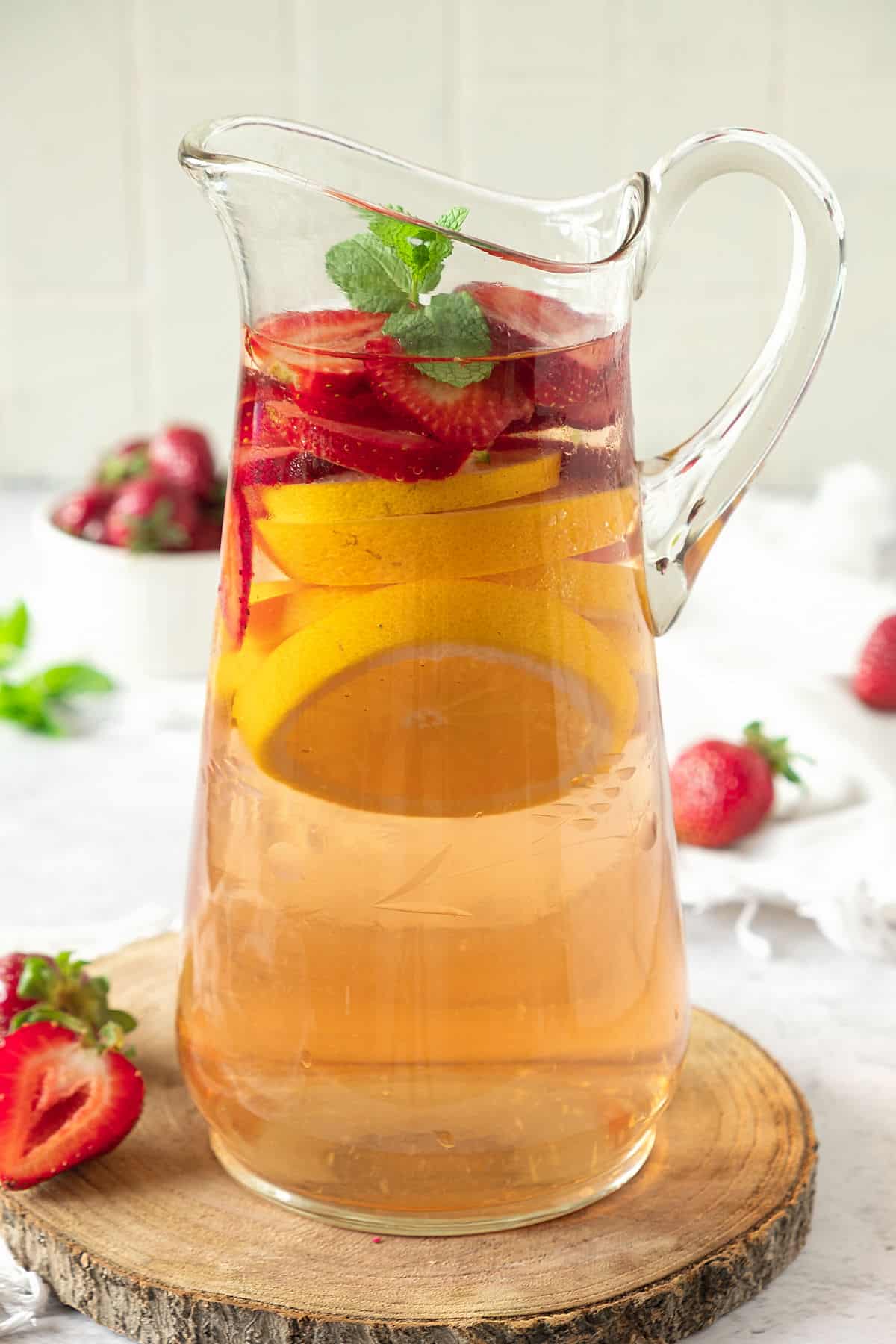
Storage
- Without the fruit: Use a sieve to drain the liquid and pass it to a sealed jar or bottle. Refrigerate the sweet wine, but discard the fruit (or eat it). This is my first recommendation if you store it for a few days. Fruit ferments quickly, and there's a good chance the sangria was left outside or at room temperature before you store the leftovers. So the fruit will already be heavily macerated.
- With fruit: If you store it with fruit because you'll be drinking it again soon, smell and taste it before serving to ensure it's not fermented.
- Airtight container, mason jar or bottle: They will seal in the wine mixture and help preserve it.
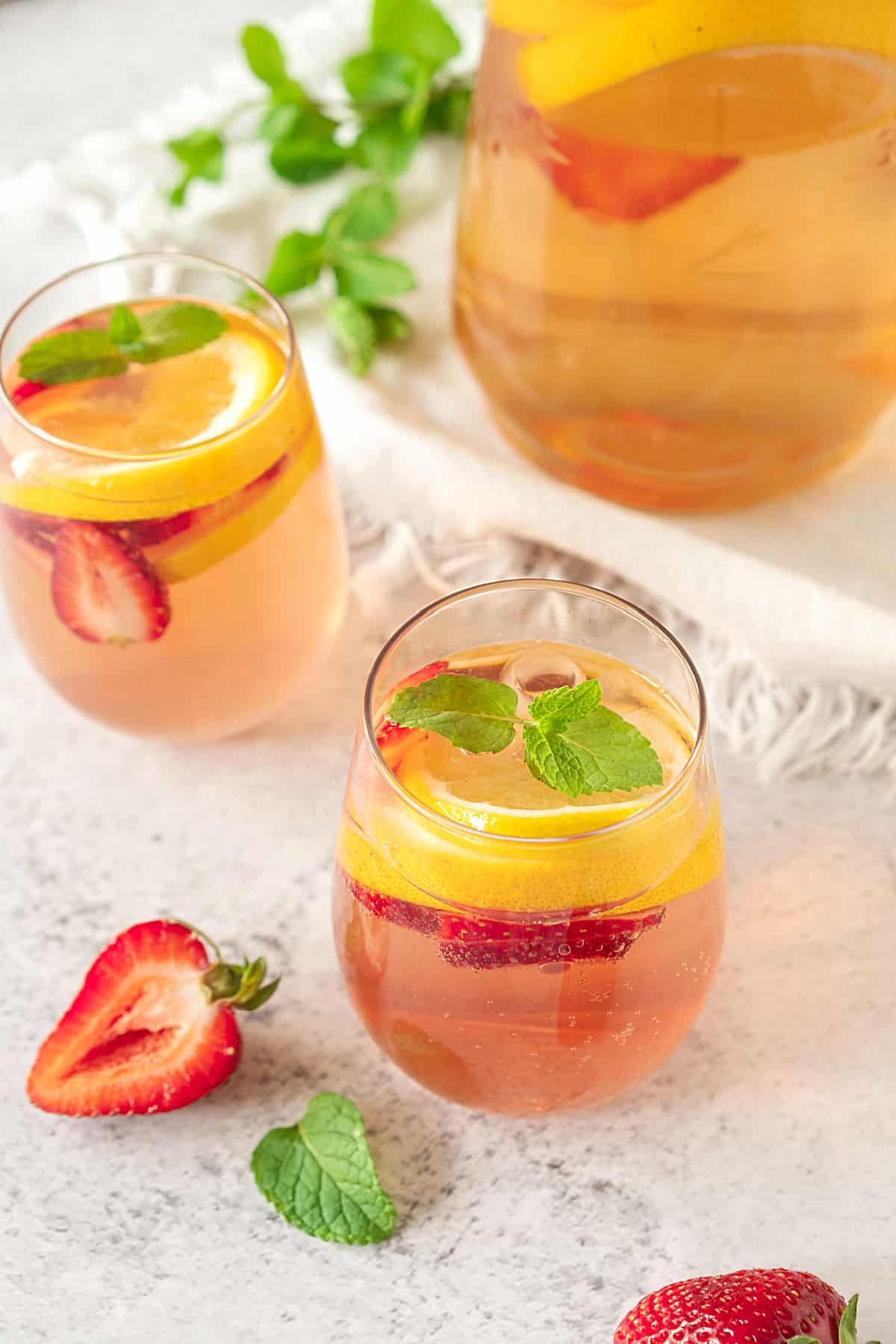
Related recipes you might like:
Before you go
If you made this recipe and loved it, you can comment below and leave a five-star ⭐️ review. Also, if you had issues, let me know so we can troubleshoot together.
You can also subscribe to our FREE email series 'Baking the Best' and our regular newsletter. Or follow and save my recipes on Pinterest.
As an Amazon Associate, I earn from qualifying purchases. Read my disclosure policy.

Strawberry Sangria (rosé wine drink)
Ingredients
- 1 bottle of dry rosé wine, cold
- ¼ cup triple sec or orange liqueur like Cointreau or Grand Mariner
- ⅓ cup sugar
- 2 lemon slices with rind
- 4 orange slices with rind
- ¾ cup strawberries, stemmed, cut into thick slices
- club soda or sparkling water
- ice cubes
- mint leaves, to serve, for color
Instructions
- Don't add too much fruit from the start, as you might run out of pitcher space for the wine after you add ice.
- You can use sugar and stir it with the rest of the ingredients. Or use a simple sugar syrup that can be made ahead. The syrup dissolves much better and is what we use.
Make the simple syrup:
- Combine ⅓ cup sugar with ⅓ cup of water in a small saucepan.
- Stir to moisten and cook over medium heat, without stirring, until it breaks to a boil. Remove and let cool completely.
- Keep refrigerated in an airtight jar or bottle. It keeps almost indefinitely.
For the sangria:
- Have a large pitcher (8 cups or more) ready.
- Add 2 lemon slices with rind and 4 orange slices with rind and some ice cubes.
- Add 1 bottle of dry rosé wine and ¼ cup triple sec or orange liqueur like Cointreau or Grand Mariner. Stir a few times.
- Add about ¼ cup of simple syrup and half the strawberry slices.
- Add more ice and club soda or sparkling water to almost fill the pitcher.
- Stir the sangria and check the sweetness. Add more syrup if needed and consider that the fruit will release juice with the passing hours.
- Serve in glasses with strawberry slices, orange slices and mint leaves.
Notes
Without the fruit: use a sieve to drain the liquid and pass it to a sealed jar or bottle. Refrigerate the sweet wine but discard the fruit (or eat it). This is my first recommendation if storing it for a few days. Fruit ferments quickly, and there's a good chance the sangria was left outside or at room temperature before you store leftovers. So the fruit will already be heavily macerated.
With fruit: if you store it with fruit because you'll be drinking it again soon, smell and taste it before serving to ensure it's not fermented.
Airtight container, mason jar or bottle: they will seal in the wine mixture and help preserve it.


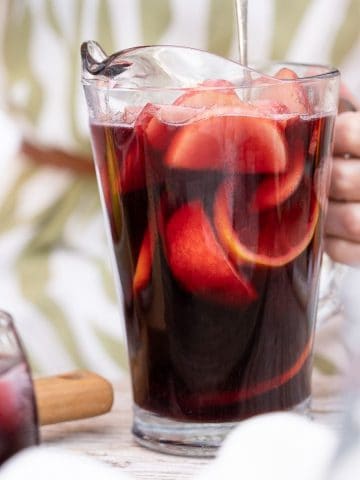
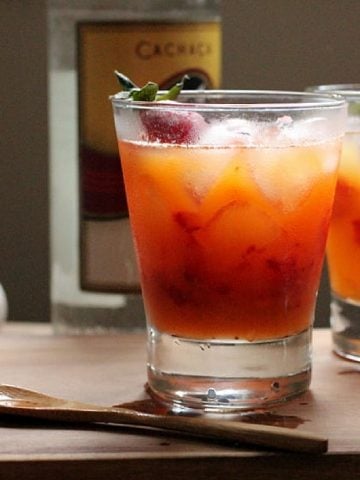
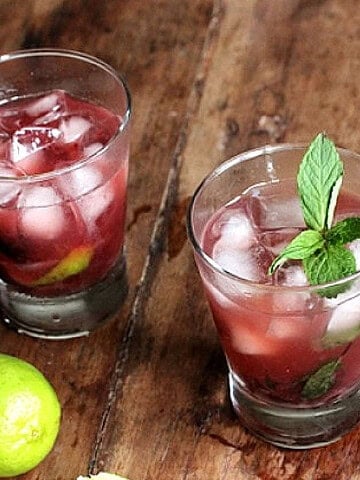
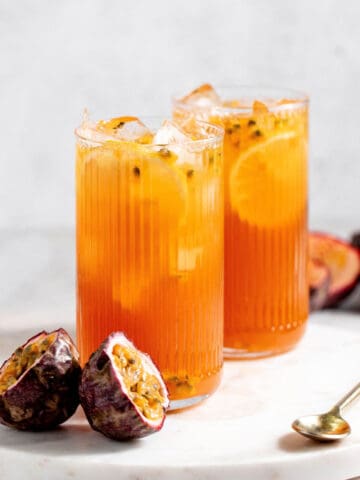
Rate and review this recipe